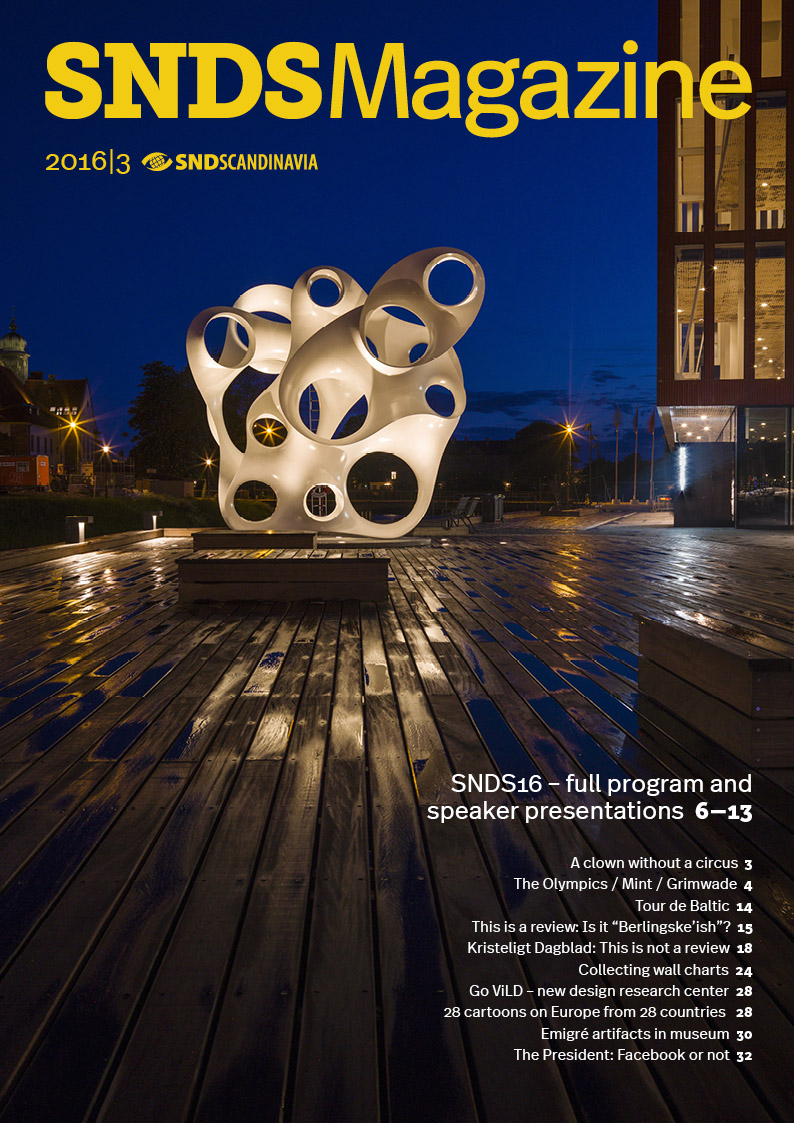“I’m a clown without a circus
There’s no-one to see my act
I can laugh and sing
and stand on my head
Nobody knows where I’m at”
– Manfred Mann’s Earth Band (1)
It’s no longer breaking news, but many Scandinavian media houses are struggling to survive. In early August, Danish JP/Politikens Hus announced the cut-down of 55 editorial jobs within its flagship publications Politiken, Ekstra Bladet and Jyllands-Posten.
In Sweden, Mittmedia – publisher of 28 daily local newspapers – have been seriously discussing plans to cut 75 % of all journalistic jobs within the next two to three years (2) – and since June Stampen Media Group has been subject to a reconstruction process, which may or may not mean the end of the company. (3)
At JP/Politiken, most staff cuts were transformed into voluntary redundancies, but a number of people were nonetheless asked to leave the building.
It never stops to amaze me how easily life in companies that lay off people returns to “normal” – the staff that stay on surprisingly quickly adopt to the new situation.
It is, of course, quite different for the people who leave the company – whether they go voluntarily or are being regularly laid off.
Those who have the age for it can walk straight into retirement; a few lucky ones find new positions in other media houses; and some look for jobs in places far away from the media they spent half a lifetime specializing to work in. Others face years of unemployment and the risk of “going to ground on a bottle of wine”, as another line goes in the Manfred Mann song above.
It’s my impression that quite many try out life as a freelancer (some even for the company that let them go – but for a considerably lower pay, of course) and thus join what the British economist Guy Standing calls “the precariat” – an inhomogeneous group of workers who jump from one short term job to the other, who have little social insurance and no chance to save a little extra for retirement because they are pressed to work cheap. The precariat workers lead unsafe lives – “They don’t feel like citizens, like part of society, or even part of a community,” Standing says, “they are frustrated individuals, living on the edge of society looking in”. (4)
The good news, Standing says, is that even though it’s a jungle out there, and even if the workers of the precariat are having a hard time, they are still hanging in there. There’s enough pride and energy to keep on struggling – at least for some time. Standing predicts that the precariat in five years’ time will “rise in progressive rebellion”, but it does take time to establish the feeling of being one class – and to change the mindsets of the official institutions into accepting new ways to organise work. We’re not quite there yet.
As much as a clown needs a circus, visual artists, designers and journalists all need a place to show their act. It is my hope that everyone who has been forced into starting a new chapter in their life will be able to find this place soon.
In this mag
The SNDS16 design conference is now only a few weeks away. On October 14, international speakers and colleagues from all around the world meet for an action-packed, inspiring day in Malmö, to learn, engage, and connect – and to celebrate this year’s winners in the Best of Scandinavian News Design competition. The program is ready, and in this issue we present all the great speakers you will meet.
We also found room to squeeze in other great stuff which we hope you will enjoy:
Two Danish national newspapers launched redesigns of their print editions in September – Kristeligt Dagblad and Berlingske, Denmark’s oldest newspaper. We review both. Politiken, another Danish daily, published an activist Sunday supplement on the occasion of the EU summit in Bratislava on September 16 – asking cartoonists in the 28 countries in the EU to illustrate the state of the European Union after Brexit.
We’re a bit heavy on the Danish and on print this time, we admit that – so shape up, sharpen your pencil and let us know what goes on in YOUR country for the next issue of SNDS Magazine.
In another field entirely, Prof. Michael Stoll shares some of the mid-20th century educational charts from his amazing collection, and Emigré, the legendary (but very much alive) type foundry, has donated artifacts from it’s early days to a museum in San Francisco.
And there’s more. We hope you will enjoy these bits from the past, present and future – but remember, with the words by artist Viktor IV: “The time is always now”. (5)
Last but definitely not least: See you in Malmö – there’s still time to join!
Lars Pryds
Editor, SNDS Magazine
.
Notes:
1 Lyrics by Alan Mark. “Circles” – From the album: WATCH, 1978
2 www.dn.se/arkiv/kultur/mittmedias-plan-kan-sla-hart-mot-lokaltidningar/
3 www.dn.se/kultur-noje/stampens-kris-forlangs-nar-skatteverket-drojer/
4 Interview, Politiken, 27 August 2016
5 Viktor IV, born 1929 as Walter Carl Glück in New York. Since the early 1960ies he lived and worked as an artist on different ships and rafts on the Amstel River in Amsterdam, where he drowned in 1986.
Thanks to former SNDS President Anders Tapola for contributing to this editorial.
